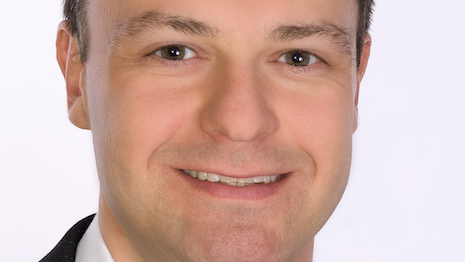By Alex Saric
Super Bowl Sunday is like Christmas for the advertising industry. Each year, brands and their advertising agencies pay millions of dollars to be featured in what is arguably the year’s most-watched televised event.
Brands pour all their efforts into coming up with creative, noteworthy ads to stick out from the pack to create awareness and a presence on social media channels.
While an ad in the Super Bowl can mean significant recognition, it is curious that brands do not put more effort into keeping that momentum going after the Super Bowl.
Spot on
Every year, ad agencies succeed in making creative and memorable ads — but why only once a year if the ads are working? And where is the strategy for mobile engagement?
On Sunday, Feb. 5, 111 million people in the United States gathered to watch a sport that many of them have no interest in the rest of the year.
Millions more watched from abroad, many in countries where American football is not even played.
Why do people behave so strangely one Sunday each year? Many watch for the cultural aspect — to take part in office chatter the next day. But many — almost 25 percent, in fact — watch mainly for the commercials (NRF survey).
Normally, ads are something to be skipped over, ignored, or complained about. On this Sunday and for days after, they are the main event.
Does the world go insane one day a year? Does winter’s darkness leave us yearning for anything shiny and new on television? We all know the real answer — the ads are great entertainment.
Every year, there are some disappointing and extremely expensive duds, but, on average, they are funny, or heartwarming, or thought provoking – extra points for being all of the above. They engage us.
Yes, creativity in advertising still lives. And advertisers are rewarded as the ads live on well beyond the game on social media, news sites, talk shows and pop culture memes.
Watching the ads in real time with virtually everyone in the U.S. makes water cooler recaps and Facebook fun again.
This year featured a surprising twist: political messages were a common theme in many of the most compelling and talked-about ads. This is risky, of course, but follows a dominant trend in digital advertising: content is paramount.
On the spot
Today’s consumers embrace advertising with substance and relevance. The more it moves them or speaks to them, the more they share and discuss it online, generating free, viral marketing for the brands who hit the sweet spot.
Advertising should do the same thing for consumers as great content does –educate, inspire and entertain – but in the context of your brand.
Many of the brands with the most popular or controversial ads clearly understood this and leveraged the current political zeitgeist in clever ways, ensuring that highly popular publications were still discussing them 10 days after the game.
Airbnb’s spot was bought at the last minute and created in direct response to the Trump administration’s executive order banning travelers from certain countries.
The ad did not generate the most buzz on Sunday, but according to ListenFirst, the ad’s #WeAccept hash tag was mentioned on Twitter over 66,000 times during the following week and social conversation around the brand increased 2,400 percent.
So why cannot every day be like Super Bowl Sunday?
Obviously, Super Bowl ads are so expensive – $166,666 per second just for the spot – they have to represent brand’s best efforts, and require the budget and talent necessary to produce an ad worthy of the placement and likely to ensure strong ROI.
And while it is true that brands cannot invest millions and months into every ad – especially not for digital programmatic campaigns – there is lots of room for improvement. We do not have to save all the magic for the Super Bowl. And we definitely do not have to save it all for TV.
By implementing the right creative management technology layer, integrated with your media process, you can make consistently high-quality creative for digital channels.
Solutions based on HTML5 creative technology for mobile and video advertising can streamline production and leverage the most innovative formats, which complement rather than obscure content.
Marrying reams of data with dynamic content personalizes your message for each consumer, enabling you to target their geographic location and immediate circumstances.
Responsive design and programmatic ad tech help distribute your ads across devices and channels.
Be sure to continuously analyze and optimize each campaign so you can see when and how the magic moments happen and build on those successes.
Leveraging data for personalization, finding new ways to align content with channel, building creative to optimally adjust across social channels and tracking all the results is a tall order. It requires a strategic and holistic approach—the deliberate integration of effective media, data and creative processes.
Yet creative remains the ultimate carrier of your message: it compels engagement, it fuels viral social success, and it determines how your brand will be remembered. To consumers, it is your ad.
TO SCORE A touchdown, brands must learn how to develop creative as a scalable layer that integrates with their full advertising process. Creative should not be reserved for special occasions.
To be realistic, your ads will not always be viral winners, but at least make sure they will not annoy people.
Strive to make them cool and relevant so that consumers notice and remember them – even better if they engage and talk about them.
In the end, it is about telling your story, building your brand, and converting eyeballs to ROI.
Alex Saric is chief marketing officer of digital advertising creative management platform Celtra, New York. Reach him at [email protected].
{"ct":"k75d+gdA0FaKbFYSnZcI0JALm9vBaQeStKmQ880OUFSWTyeUJ9C+VlDJeprhbOBvI\/ptqIlUvLdln9gZenM6x9fc+ZYnaq2DGjLlp6q6Cxx2zFSHQ0iH1TvyM\/PIxX3w44oBB+ds3loUTqT+dLdgG9ZyI9\/Yg7lZ4O61StsWJ1k7SHlYN\/rOthGwaQ4Z6\/b2+u3i\/xyAJcEp2sORYJ2WzY9wl5uDQDyOiusIbwscotmJPr2OAhu53taxJXd9ozbHf1WRIvoSSGb4eExulCujjpu0uhsFt4lnFCsnhrJauYPJemsSMFG12dwO2Niuraku\/WM4GC+zkwi3ZwcIXJfjYNMdbg7seSMq0G4lga14Sj0fdj0kJVRi34ueMGwXKMi7xGLmqYaPDKDYo4kKwGb34UMAAGUd9CX5O9nVUr+4UiX6wyF9W6Wxj8yW2YfFggblvPsQokVMH9XAEQ7CrgG5VQ\/2TS78B3sh6+vu7IGbT84ubThmiddHyIldLoKYZNyRkanDgXLO74uMZJojzG+9ND+P61nelcNKlLN5RCk2GvVKEqy0Z0Gs6r0dwA19Cq8Lg3MG5We\/HgyHSEYcPa8xG4xpvWsX7+W9rBbrG0nKhrRTyEJSNbaPYP3DPnH6xWcbakKonRFJFn4b0q8YTGq2\/QiikOFgwhSe2\/oJRYlpBZzl0KOOMBL1Lj2tuElrpqHtIl7j+htIPLeRD20S75+hkEaqDGCx4qV+iMFWg9Q\/+jxxM7kay2xxZmQwKEmlkMqOosTT3FniaOH+EAJh8VsHzZ96rTXU5KlpZPhB3xqn7jY1BxVLBe5f2ekkx+8TGuKWFItp642E0QR7kyXCwCzOh9kWwWQdL+veY8oEuFAQXO9Li2+4EmfWYsNHBnTeoYZ3ZMlJOCcS2e9ueX0zd1b4NBYVTca6eD0izMs1v3V4hlOf668w+C+8vKDfcDm\/fvEOnKPTZWI\/Rf88ioAnSKKsuWCnrD8Kju\/SiRywNAVwq27iAE3HzeX6ErQ65f2JhUK73L1h9xD3ZuMxGmsC9W7OMMVGRQggPynB3iPnfR56VWaK7tS47J6qFKsCEJoycRbJ4NB69rOstUF8BQIC+0UDVxOsrzmmHkjPu9c6lTQzseOL4i\/lX2BrAZsqaajOE4kTtsP5Ds9VDDj823oalpa2+4yvpkUl8v029nEmredrBjhVQ0RHacrJEjPysImKzss74m3YvkxZxN39MU2BFDF2zlFAuvjdMg4jBF2WldycLhIP59VBuQ4njY+aZi3t4hQdwdNVTMTd4RGIEGi19WSc1ajrIV6HLwCPx\/A0YO+bPH9QmExy4gQi5aWbFVOBnxqcBctw3zzxiILf6wXE+DtPJm3dB0I5hls98LerGS1coX0BOdx3nVHEqu7wmQ5Q9CawDykuL9RDSKW1kUuqHQc+j3LFYvTtGtSyr5gRRlKajAM2vdQ+EXTLJwC22omaX43z4IGKaR35\/LOy61CgBjVPBf\/Aviz44U2f4NSSGgefwjdfM+TomF55MQ7UmgkqLJtVjMfaAGmPYtMsjfZL2KK1NV6pHE8tXsaBsvkB\/eVi4JzvpIKVNFsmIXbYI7qX7uhn1ZSRaLgpQIJgMgIr43VwwBvhnN8mldVorfwOgHbimaLbQGVX0NTiC2mURQLDb\/qxnaBA\/HfnCdMI5d2IXYnBbsYtRNx+TNxElnQV+6GxNodOrR5e0bg5cz0CfKvEsZZWQFPpn7bd+776Q\/Z544MeCRWa0FhdEPUaUy44cWocmM91PKvKxQ6+7Unt6QxaizJq0yyuY9GPmvoJ4n3MgDTIV1BpPiz8j5p\/Fu0txcn17ouphaqiIYWLjD0+k1babMuIJ0OJ7oMHRJdqejcoJ9xRVMaAvh7zKhs3iKKpVqByXmae1Sxu8JoPEulZHrOjRiJbn7FEFW1gLrUxs+dplNU4Ezq7UQioUXZ10NJ9UC8V3boGtoj5Fm4HIxcYsSEo1RnQv\/TkbL20ZYCtFKwVl+527G9ffsqv03Tq6E\/yndDjT1zGn3\/hjvjTlssFnSr6haAKj4dE52BUDTxen33U0uOFw+zMhO7brfpzDTBRzXjm0RVUdU9Qb19xtVK28fwsaEhi9TuVCp91t5Jo8OpW28\/Jejjw6T63Z4UlD9bDK0E\/S4ARk75fJVnlsxhmLTuLLg60VLP0C2aBvDpHYyWRDObJLhrpHdNKd9EkLCwoTwRkWijetaTSpJo0dPtlBLUZ6BZ7f7kDpKOzhv4peXsxqLzQX11Ht41upE3G8nnRS67q\/fu0gxLT4CCAPcaFHaqA0x+iFEzWJkFA2obqdixrFc6ezzO+lxejGZF84yZeI9j+RdXivF\/iIBA0ELoiFb1nKvRMhOfAZo9JIlGXsTa9FYvZ8jX+IvRunYeB1KPmwIo+T0ADNX0NA1eacQBFS+GOnUYGvGpjBUI7+qPo9qmaObGREbq3he\/qiIZQJEbg+1G\/CL3\/auGn6Chlb9CWtqlc2dTyio0CsuNTci8dNcBMfqdIOVSVWNsGqIP9dBP812PCvAw0sXDza5ks8p+bAaj7\/XxcgHtLbbaQqu+vY98ZoTXlmB3Bx0p0CbWi4\/4zjxwlxXFd\/4pI5zZzSNqdWdleYDToGmD8\/jesG9eixDBrYm\/GzKrHGy91jrTKdSyUEZYNHOhfM4+0MALMakZ5UjUcxE66h3ZZNP18UspCvfCm32XqzaQr7XM5FCKjEUNhY9Bd5oBoMbFYkNl6LUseKhmF6ugtDyd1R9QfbB\/Sx3q52upNIFB5ejSmV9GQEjfkemXL0YvGrNFQ1L8a4u9oJUcwp0MC7LVloNyYetejn\/owccPymE7CU8LusrNFRLxL9W6rTkxhykyMV0uZ4hGTF6ZW0cAD4dJMtGVtb4DLbla1gvGw5PE3qwbSj5wPKM9KyhLmCH5ru3xLB6k1XzIGHhqQTWTGXN5+OdTRS\/jhcDripRTSOSkgFIjb89ECyIA6gEppgx8UlBPLBblm73dCgmdRLb0HmMPg0RJn+rJ8iUmtp\/39zk53eqcUShdZNUF7\/+ggx4iduvEU7YrNtCsHhFD0vGP8gW79zhxRu6pg55J3zGxLe\/EnTgl2ibWqtpvhShr7RmF7wFQ4jd\/97HVBO8unYTqnwMLDsv\/KCFefbxHyVsmLvsukXnDh+2RSMal0R13cfoDl2iGars9mONmXWPVlVPGgYTH0OKZmnazMmb4X89Ei+dAYkWKbHovE\/Z\/FIAbyWOW22MhzFchWHkGQ\/4IkcypTvRxkwb9GBtMVUOLwH3PynB9ThLgriNY\/ZxOlbTOIzsRC2oRKdd8y3O1sKUP809R4ZG9rBMa1e2oGbpInk+tf2+Dx4dVGmYwOIZmIPWGF1qzvcRLlzwrWojk13CldNUVZdWScjHUXZo9fTnx97A2k7oIcK2K2bi0IAtcyc40S1mJXmQIqqzDzU7gr20RlDJ3lryfBkbUH0Z6ZfGmYUELYQasIoHh1EQw41N4NycC6It9GalocMksyJiwLf6fru3qyzAYkBsotd4XRc89Nu2jR9ZH8RA54G1e6csXyADCiUaQy3zQWI3W4rFXi4dGt3uBAOwxWVpjkhWL9QM+5ruue7ISJC\/QKx\/ZW4ot5ULd\/YtWK3A8+mWZQfyqXPrgGsiV6qM3DNu27D8ie+EshpVi8w+ToqIsQhZ12p\/cXEXdqZlFw0evuh1ySsgyjNhnbgFeV\/mUeNhVuOopidFfH8ZtmiBoLkRoi27U4OJQhva8zogek4sdMD6UUSXkeqOE3Ew007UgLpQEGrg8+PxwtSGwK+SnH4gN92heLWHu9w2DI50pzz89O8eYuWmLsr1WH\/Gj9s0aaQj48ODRYPNqNPO6lK71suTDeWL494tffKtol2U2R7PMrqlJKFQhJOZdABoJPYogTq82VwUgQ1gZDeZ\/TSboquQC7L0Q7Mk90EgnnuWINb45RNUl92CQKwhu3+oZ\/80cDV0yXhC4RkTwjpRsa4K9E6mX7qq\/UsvcJEJJo\/H7TzuAG5Ej7SxQwVULp0YMbW7IwtVGT6hHfUiWhr8mV3xLU+w3U4sKb27Nb5swoepvXjVNoUZSZuJp9WAsKqwz6Yq7nH7yL+Qf5JznmiYdVRl+f51O3a9rvxQB7fU8jO\/3aGqg5nXKtNsQaGbNcpLsXkUJKaJT+MQqpMcn\/2bbLG\/68ShMwtnD9D3iGssvgPNcpKeEkqyOW\/K+0arhr1pgJH\/SwzL4VWYI2PXqJdvzd9iyXM9ZJG3pmWtP8xH3b0i4B7hWL1zRh77BrxVFLvpmtjuTc7h2WR872w\/ZjeU5vEYXZ0nwrJJL4\/vuy6984oI1g0mPU9OZVxeZrHNlDsWGlUkLG58QHeEhFq7TcrBWf21HB\/ebDzyttIQ+0KsbNfovfjot7zn8r0BIuQ\/wrkFJ3+wzAKBnNrnchc2KH2Xrv8a3E\/FFdaUzFVy5lSnnysxWl+ee4osRMD1mEYmuaaiqPhPpYuBWWLn4Rg1UonbUsY0PahPOXPk4vXcqj9ad\/zz9j+epsNHO8sJOaUpMer6no87O3aXVESBBnH7Rx+hGi5359HyUb7XSeZ5x+S\/SbC9yLvlh82iFN8LHoQim5uzLiSPs1gpEt+DZGPAQpUd3Oy\/5HH\/Y7hLDmZb8Qk0aWwd3TrWy\/bmp4IpU\/HnxhZJ7yogMxwSUJpt7OcE68mmdr4VZUyyYoAB+42pQC9BZGf9N9z1zeT9fx0WcfEDmzhLv0Cue9LCDdGrMHk2FCfXHlpJPBnTyxompzwz\/LG+rzw1Uk7yMkMfTsrk3pJv4Fbk76g5S+4icSEPiz5ElLXAC2l2JvZPMSh6BsZI0q4NwRJk5zSh4t4Ijyk9WyTbCzbof+taBBtkhHqJCWyTjApcsfo\/4AG8I0lk+NBwH\/esdiQ6b9PrMeNxMmGq1HA17f5laetJYGM5dbKJ8RRyALu7CD52NuYWUdaIjHzUH+sooWMwp52mduEpA\/ZOXyQoO\/gBX6zbSL986d6VqD2xmF6p77b9jJ9Dl2FaSO9SdegpvR6psKaC0YsWTTJj4iN7Kj3zftPDgqbGpCE0ZcxOjugpSLQrcGg3PYxIvaPNp0fkVNOsgKCGieNqpYeosJgcLWygCKeKPjSdIeRwwn\/uho7sU\/Ix5mYRm\/8P6XoJgFuTJbua\/Owlg++WkrXIk0sCN7gavtAAeW9c36TwP9IRcvR48+UiX1W\/8Yg92aJHdVm8fpWYx6LL9Yc6O9vgcKzqd5Y8i3JK6ZILKkrXwowDumNTTaZdCOC7ivBRY8PbA1ytoIldTKnU5jo4f3GGBCeF9+oN9kOlSRxW2XiVh\/ueF8G7UiefNmFoRWj7sZBufli\/+HNBE2MBXe\/pQa3XG+tmLcj64ASVUJ+tY8pC31tyG9kyg28DfVu6+bvkMIqi6mBx7RwjRYeFkvvrdYsni7l\/BzfwwcaQxY4iU3V6+7H+gnD4SH+bp8b6zCyFgc52HTvPxrwYvDKA+KIABEr8r7\/LOi+hUFUt\/Z+qQPsArN1ycJ6eHzD2sbA7jJmdOH9RVWUAMf8H\/0b5hHFaOJ6jycky+Ag+M4QiHfCKhF5LM41E7Jp2ZX24RgDuTYNqlUhN2SsVe7ClWecBdWTKRP3nBOU6v81wGvKNmEM4tpO9TYMU1aShfzVNc0hCt1z1\/XMGAAcqHCz6JeHP9E0MD5IFCj4f3sCwZrcCs2JNnd14J63bDSTWHNOVe7KUXFQTbA89wFO4lyzhftw3oTXDPj5KiMHO9OCgzyLXJrPMXUMqAFMrC3hPnbE76warjtcytG5K3EwWUPJ0WkB65\/mNVXxb9dcAZK5\/\/efoLm4SDxAG40NoBs23j7a24eHcw\/7ptgC3ZZFBQFqxrbTU5NGDzcsSGCvbG611KeM6gmjwjF0NhXMrCB\/nH9q9fTU1vpY4C6Volb146KLFE6C99TG\/HPCX1zVKDaSG5qeS6nzYcN0lNo7zXJRdMz3\/Rr2Lzcn7c3hv88Sq4vKe2ETSkjAJWR4xcmfDfolZ2uxyzEaISiqQQrVWKKFAGE0bVEoeCPDjLTl1z86qqYRl38PgJ4CwQN9KTqyiJVp8DzQ9rRWCbdUIKjq+Q498ZRXoC6yfw7ZW\/m0cWAS6ZIA0QCRRmNXKW6imsSF5YYzJsUfrzyvNnB3hQ2eINOX7B1Fo\/hXN7Zv41rRQHWWlYWKvPLFS3yS8M6tcyziO2tA5WwcuAunZ9g5yNIoSqa6tyEYOQj+mQTYi\/apOZOi+3sV\/oanSPHekhDY1hYL9jM2oM5cmppJ01QHpMozT1tfa08u0fMvJXAO5p2Cha\/2UaWhEfFTm4dhnG7PtuAg8QPnxYhQM8eYByg3aynP02oj9sP1\/Kvw5ls7RCRIu2+NL3Omp9\/ILI79fH2EV+blQCtAK\/x7wawS6iEaYYFETQZmZHCqpkLDW5ffnJPeNf7OJkJKb1sJF2niodxZnijUNg50Sq63RiKlJ5EpzGpZ\/WhfvvlCygSkz\/iW6xp7hrQkxVvnRFdBEJKYUYPA7g1fTclPcJ2vUAZT\/frhEuXj6xQRXKYfOBOSyndiVsg2p7rZYZ9ArpUHQyvd1U9ZwgQTl8dp7APIq7DKhWbfnvkPbQG\/iMPaF49gka\/EP7bxaBm5m9BdDIYg9xzyZUEju7R\/tWt99iGEimU+sZYH5bsN4wbCAbiOe5b8yX6m0fu0HG+eRcxA7v+v50UTtQfQMrY9XB9j4vkgz5ncpVFhM99KDzQm4J95ZmjVU0z7Ddy8L0N7Td\/2f1OP8ib0FPXna4xugLDQOIn3Gk+wzkSk7p9RTV5U\/Ovthk35fNofeuip6YqwQx225mLGRDdFUmzNkSKElIr9KrtVaMJOXbMD+dk0wHp8pQDB0ZmiemTTbqzqNnTDy+3D4jgTB5IdobcSueaI15rSNcoc7xWxCgfoKFw2Yse+\/i\/5EjIcxswHoHSW9y9+vTzn+qVPIMVT0XJu8\/\/OvjrqrQEZ51580WwlbPdFI59nYOSfiakNoeCU03hS7gyxZbDrmL3t41Rql1nS\/JZy8wFYQHLYSQeYGjlP\/pizumwtoMeEuMWKK7PVUTcmMWFhcApA+dKkYsCscKOpw3bTB1ALOmC5akdbEOmrA5d19BU\/GxvIrFYW\/MdCeIGCl5uvu3p8\/O27BdMhtq3YlZ1HVRx6X7o6dF3roHodmXympWZkJidZCPpIOEEPNrb+djGbcE0X+UGcHTC3H1RBjmpiZUWNE7qokjta1x8+v1QYsSJhCuLnKia8Eb6YTVBpKrB\/57h4z82q3pz5wFgcJ1NYG4Bg9pIlmFx\/6Kb4pnROYJevWNd\/Ks5D7znMiq70QiMz0DeEahtAX2zX8KPveNyx9wVY4PVp6yU0hWuq9upSY00a9ncYvEyEzCbU075jLrGETcgFjGZ\/ip5qujYhjtybn5eYdIMTL+0l3K42QTaKtkAOt43oqaw6cHbbBEV8iFCadWfpLFNtvUs5j1TiLGs3hceo+GIUVeuvVesbh\/yPFTt2lJBG7n8HLsXoESfh\/8OM+ajTrLtrl517V3qF8dz\/CezJXRpg7AL98\/2nYcGTxo9Y8Z0v7JEyNGI8GU0PJ0SbIrwHVITcYLrs\/3H+Nb3\/jdYqAqA0CtRYQnIvtOwoLWY3\/ITWk8P6G3Zcp7X45sEyHv2wZ99UwwQ7dEp8TvV\/YL64vqYwp0D1Sj11fxjR+Jkz5Z+JQFWSi8+fxO\/8hQjpySUnLJbN3la+DWlHlBX5QN1foufJCFdLHjOYjqfM5Ng0LpUCIYNbCF\/R6kZsABb9CwzoqOpWouRosD0MdBSvr8OYf26xt3VQtiEPcYloQsVXY6Uy1ivtZJZ4DEI3+C74czCkA0HoRl\/QVJaTCjAoW8B6Sq8oWJ2o+d\/9rla9HCF9+NObg0QQ2O8CbLgl5AV988ykv+OvilgLSFJNaPQtmmAaGhwpIASB7RMf1NIaiU2RM0cOPBWT6HFoj6JAkXoN9jyMJKY7gmSnwXkufsM2ZppfiDW\/TSRSk3LbiF9N8phr8Fj1O1KSsheWeDvKzBN+b2nQC31pwjFYKV1YIJzbGOHkTVXTHyuxdXUVzwwn2hZiFJLXgQmHdOAgaZsIwNq+VW6lZIAOpxucnidvJtcqoii1rwdiNCDalEFM2e8AmUEw8fSG98jB7mGGzgBC8VqiZfG4MwS0E8ayoNS+GPEXv1VNLIR2LVCm5xf9sxsIU6\/0LbtRvue\/IyXR1NITVnEOMGVZobQjUYsWe9QN5GiyKHxrjjzHIcq79\/0bFP453uo6LYiIBLIbEFc2oah0UQfy1NlGIsu1RuOYehdhzOEDZfEvMBEEP36S1GwGiw1oM57JdFletrItTO7vPuxoUlRRc2h+xjO2w9JLguqffS8KPq\/h+ZpE\/CNAoKCM8oKWYQMLK1y10VOnhqyoKM2942csBqFSual3IA\/CPEgxsKsR\/d6MiQYaavKGQWeK3ZY\/w35ZRh7eTJNpVi97OSnbwdwZCgrV3hS+d7sNaews4ru4kQ5OKcWSWJx9TXAecl14PTOl\/u5fWC3cSzB7mKnmFQ\/mx6LMBTH1J5j5GLEa1aiQY3abvyAO04yBFkrfkKr1nhlA888+4b1CL2Uwaf8VGpRSkeNPTr\/ump+D7ol\/D2vHCw9QHJcK3W0KStugzmjQ\/pgtvYZ3GxGIR4AHOjXh02XvWzfwTOHJGjw3arLpyTIsbvr3vpKzENpzH2ohd+CFQRD3ntMichkg3tWOxpQUbHa+GGNTL0l4OuJ1xZstNZUj0pSclVX9rccFMJr5xuQjufbr6eMUQ==","iv":"438ba89f7e8e76c28fa7e637b1b437a9","s":"a5eff5d4d58b3feb"}

 Alex Saric is chief marketing officer of Celtra
Alex Saric is chief marketing officer of Celtra